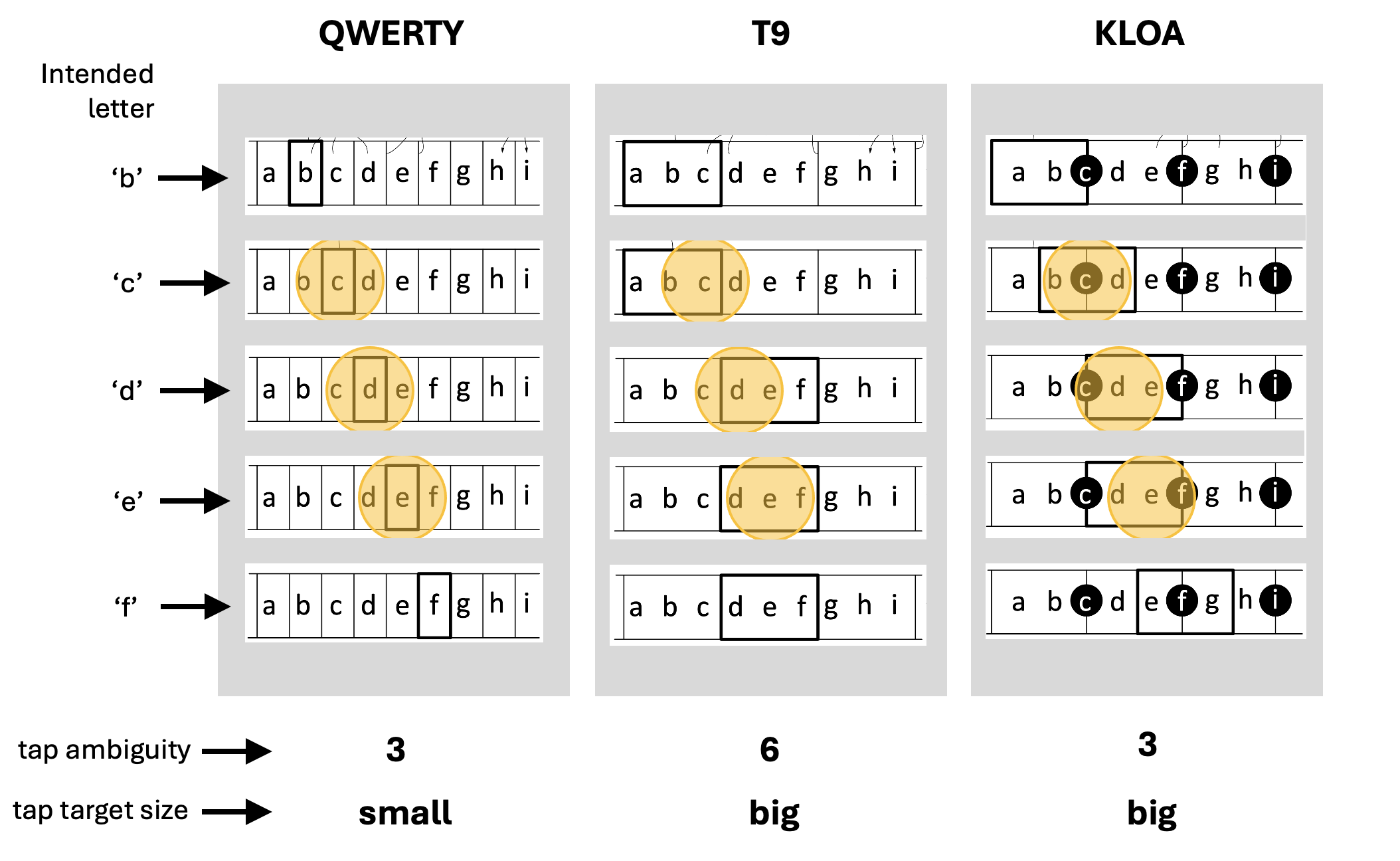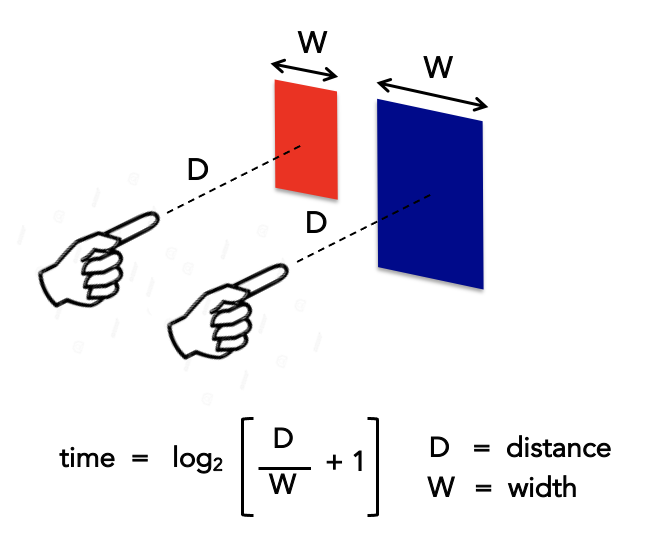How TapSpot makes text-entry accessible
TapSpot is a utility that reduces the dexterity needed to enter search queries on mobile.
The innovation uses a patented technique that overlaps tap touch targets to make each target visually bigger. A purpose-built algorithm disambiguates tap selections to accurately identify a searcher’s intended query.
The technique does not increase text entry ambiguity. Prediction is as accurate as the standard 26-key QWERTY keyboard.
Can 10 keys be as accurate as 26?
The answer is ‘yes’ — under certain conditions.
TapSpot is designed for the following unique interaction scenario:
finger taps on a touchscreen (no mouse or cursor)
mobile-size screen (not bigger)
modest-size alphabet (20 to 32 letters)
Each tap is recorded as a selection of a button and a button-half. For any given tap, the candidate letters are: (a) both letters of the selected key, and (b) the “boundary letter” nearest the selected button-half. So, each tap is an ambiguous selection of 3 candidate letters.
For the 26-key standard keyboard, the ambiguity of any tap selection is 3 as well. That’s true because the device doesn’t know a user’s intended letter. Even when a tap lands squarely on a key, the device must still allow for the possibility that an adjacent button was intended.
So — from the standpoint of the device — the ambiguity of KLOA and QWERTY are the same.
Is TapSpot just a re-make of the old T9?
No, definitely not!
TapSpot solves a problem of T9, which is high tap selection ambiguity. For T9, which has 3 letters assigned to each button, each tap has an ambiguity of 6. That’s because the device must allow for the chance that an adjacent button was the intended target.
For TapSpot, each tap is recorded as a button and a button-half. An algorithm allows intentional edits to the other letter of a button or a displayed “boundary letter”. The effect is to distribute button boundaries.
For example, for intended letters ‘c’ and ‘d’ below, notice that:
for T9, no overlap occurs between adjacent buttons
for TapSpot, the acquisition area for letters ‘c’ and ‘d’ overlap a lot
This is what “distributed button boundary” means. The boundaries between tap acquisition areas for different letters are distributed along the length of the row, so that no sharp boundaries exist like with T9. Another way to think of it is that tap acquisition areas for adjacent letters are overlapping.
Why are bigger targets easier to select than small ones?
The answer is Fitts’ Law: “the time needed for a user to touch an intended tap target is inversely proportional to the target size”
This means that as a human moves their fingertip toward a target, the speed they can move their fingertip toward the target depends on the target size. For a smaller target, the time needed is more, because the person must slow their movement to avoid missing the target.
The effect is due to the way our human physiology works. Movement is a series of incremental refinements. Each refinement is like a completed cycle of starting with sensory input, then cognitive input, and finally motor control.
As the required precision of a movement increases, more feedback is needed to control the refinements, so the number of cycles needed for the movement goes up. Our human physiology has a finite minimum cycle time. To make time to gather more feedback, i.e., more cycles, we intuitively slow the movement.
An example is the movement to thread a sewing needle. At first, you can move the thread quickly in the direction of the eye of the needle. But, as the tip of the thread approaches the eyehole, we intuitively slow the movement down to allow more cycles, so the thread tip can accurately meet the eyehole.
The bottom line — what does a user gain?
For mobile users who have high dexterity, TapSpot makes query composition faster.
For mobile users who have low dexterity, TapSpot makes query composition easier (or possible).
Either outcome results from reducing the precision needed to complete the physiological task of moving a fingertip to a selection target.
Note that TapSpot is not a tradeoff compared with the standard 26-key QWERTY keyboard. For TapSpot, the algorithmic disambiguation task (i.e., the work that the device must do) is no more difficult than for QWERTY. But TapSpot yields a real, actual decrease in the physiological effort to make selections (i.e., the work that the human must do). So TapSpot is an absolute gain compared with QWERTY.




